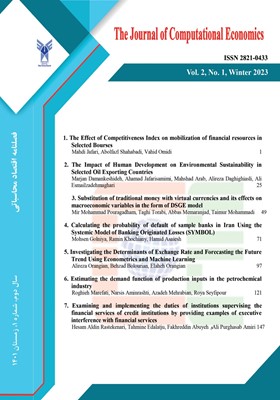Investigating The Determinants of Exchange Rate and Forecasting the Future Trend Using Econometrics and Machine Learning
Subject Areas : Computational economics
Alireza Orangian
1
*
![]() ,
Behzad Bolourian
2
,
Elaheh Orangian
3
,
Behzad Bolourian
2
,
Elaheh Orangian
3
![]()
1 - Faculty of Management and Accounting, University of Tehran, Iran
2 - Finance Vice President, Arian Mahtaab Gostar Co.
3 - Faculty of Economics and Political Sciences, Shahid Beheshti University
Keywords: Exchange Rate, , , , , Sobol' Sensitivity Analysis, , , , , VECM, , , , , VAR,
Abstract :
The main purpose of this paper is to investigate the factors affecting exchange rate and to forecast the future trend using econometrics and machine learning methods. The seasonal moving average of IR Rial to US Dollar rate from spring 1392 to spring 1401 is the proxy of exchange rate as the dependent variable and balance of trade, debt to GDP, GDP, inflation rate, liquidity volume, OPEC oil price and unemployment rate are considered as the independent variables. For determining the factors influencing the exchange rate, Sobol' Sensitivity Analysis, a machine learning method, is used and VECM is harnessed for regressing and forecasting. Variance decomposition and impulse response function are also utilized as instruments of VAR for measuring the future shocks effects of independent variables on exchange rate and the periods in which these shocks will be neutralized. The results show that liquidity volume, oil price, unemployment rate and inflation rate are the most significant determinants, respectively and the future shocks of liquidity volume, inflation rate, oil price and unemployment rate have the longest period of impacts on the exchange rates, respectively. The study outcomes also show an affinity between econometric and machine learning results in this case. The predicted amounts of exchange rate until winter 1402 are also included in the results.
_||_

